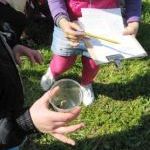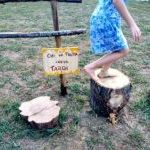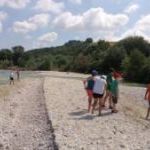Growing at Ripa Bianca Nature Reserve
The 'Sergio Romagnoli' Environmental Education Centre (CEA) is in the Municipality of Jesi, Marche Region of Italy. It is directed by the World Wildlife Fund, and is a very important part of the activities developed by the Ripa Bianca Nature Reserve. This environmental education centre develops many projects dedicated to schools (guided tours, educational projects and summer camps); families (workshops, events and experiences in nature); projects for the elderly (social gardens); and activities for people with special abilities (workshops and volunteer camps).
Website
Useful links
The Countryside Classroom has a map you to search for nature reserves and farms to visit
Country
Media
* TOP TIP *
'Encourage wildlife in your own growing areas to help control pests naturally - ladybirds love to eat aphids!'
How is the project linked to climate change and sustainability?
The 310 hectare Ripa Bianca Jesi Regional Nature Reserve was established in January 2003. It includes the 'Sergio Romagnoli' Environmental Education Centre with its learning in nature area. The Reserve is crossed by the Esino river and for this reason, it represents one of the most important wetlands of the Marche region. It is home to around 150 species of birds, some of which are regionally and nationally endangered.
Part of the Reserve is specifically dedicated to education on sustainable agriculture, and includes arable land, vegetable gardens, hedges, orchards, bee hives, and ponds. The project aims to spread the principles related to rural biodiversity to a sustainable and ecological agricultural practice. This helps the protection of the environment and landscape; promoting a healthy and seasonal diet; supporting a local economy based on short supply chains; and a social involvement in agriculture.
Who is involved?
Every year, dozens of schools, hundreds of students and families, elderly people, citizens, visitors and tourists are involved in the activities of the environmental centre. The reserve runs growing projects with grandparents and helps set up gardens in schools.
How are the participants involved?
Participants are involved through an annual programme of initiatives and events which are advertised locally. Training activities aimed at schools engage pupils on either a half-day or full-day guided tour. Students are able to visit the different habitats of the Reserve, take part in birdwatching from the hides on the lake and have a stimulating and adventurous experience. There is even a barefoot trail!
Activities are divided into different age groups, and they encourage schools to consider coming for a educational course of three meetings, each with a different approach to the chosen theme.
The centre runs a course called 'Sustainable rural future' that includes growing in the vineyard, ancient orchard and organic garden, together with composting, keeping chickens and looking after the olive grove. This one hectare area of sustainable organic growing is used to demonstrate traditional practices and as a stage for workshops, guided tours and themed activities. It is targetted at schools, providing education on: biodiversity, taste, the discovery of the agricultural world and its traditions, products and activities in the garden and seasonality.
The dissemination activities are also aimed at an adult audience: organic education, sustainable practices, agri-environmental improvements and biodiversity education. Finally, an important target is also represented by consumers:education in the value of organic products, education in shopping, local flavours and short supply chains.
Key steps:
Many nature reserves offer environmental education for schools and these prinicples can help your school growing area. Here are some steps you may consider to get involved:
1. Investigate nature reserves near the school to see if any would welcome your visit
2. Think about growing with nature: discuss how you can create homes for wildlife in your growing area - where do your favourite bugs, butterflies and animals like to live?
3. Plan some activities to make some wildlife areas back into the school garden. Perhaps create habitats for bugs and bees, and encourage birds with nest boxes.



